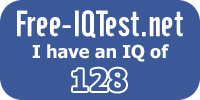Tuesday, 22 January 2013
lesson plan reading and writing narrative legend
Posted by Ainnika Abi | Tuesday, 22 January 2013 | Category:
|
Lesson
Plan
School : SMA GP
Subject : English
Grade/Semester : XI/2
Skill : Reading and
Writing
Genre
: Narrative
Topic : Legend
Meeting : 6
Time allocation : 2 x 45 (1 meeting)
I.
Competence standard
Understanding the meaning in short functional text and essay in
form of narrative, spoof, and hortatory exposition in daily life context and
for accessing knowledge.
II.
Basic Competence
Responding
to the meaning and rhetoric steps in an essay accurately, fluently and
acceptably, which use variety of written language in daily life context and for
accessing knowledge in the form of narrative, spoof, and hortatory exposition
text.
III.
Indicators
·
Analyze the
intrinsic elements of narrative text.
·
Compose an
analysis of intrinsic elements of narrative text.
·
Create a glog(poster)that contains the analysis
of intrinsic elements of narrative text.
IV.
Teaching-Learning Methods
·
Class discussion
·
Group discussion
·
Using website in the classroom
Integrated
technology:
a. Internet
based project
b. Principle
Using Technology in the Classroom (Learning Theory and Perspectives on
Technology Integration).
c. Project
Based Learning (Differentiated Instruction and Project Based Learning).
d. Communicative-Facilitating
E-tools: Getting ELLS to Produce Language.
V.
Teaching and Learning Activities
No.
|
Activity
|
Students’ Activity
|
Teacher’s Activity
|
Duration (min)
|
Material
|
1.
|
Opening
|
·
Students
greet the teacher
·
Students
review the previous materials by answering the questions from the teacher.
·
Students
report the progress of their glog.
·
Students
pay to their friends while they are reporting.
|
·
Teacher
greets the students.
·
Teacher
reviews the material of previous session by asking some questions
·
Teacher
asks the students to report the progress of their glog.
|
10‘
|
LCD Projector,
Laptop, Speaker, video file.
|
2.
|
Finalization of
the project
|
·
Students
work in their group and finalize their glog.
·
Students
prepare the presentation for their glog.
|
·
Teacher
asks the students to work in their group and finalize their glog
·
Teacher
re-explains the requirements and what should be presented after they finish
the glog.
|
20’
|
|
3.
|
Students glogpresentation
|
·
Students
choose two representatives from their group to present their glog.
·
Students
present their glog.
·
Students
respond to their friends’ presentation.by asking question or giving comment.
|
·
Teacher
ask two representatives from each
group to present their glog.
·
Teacher
asks the students to present their glog
(10 min for each group) .
·
Teacher
asks the students to respond to their
friends’ presentation.by asking question or giving comment
·
Teacher
assesses the students’ glog while
they are presenting.
|
50’
|
|
4.
|
Review and
Closing
|
·
Students
review and reflect on their presentation by listening to the teacher’s
explanation
·
Students review the materials that they have
learned by asking question or giving opinion about the lesson.
·
Students
greet the teacher.
|
·
Teacher
discusses about all the presentation and gives a short review.
·
Teacher does a
reflection by summing up the day’s activity and evaluating the part the needs
to be improved.
·
Teacher re-explains about the topic that has not
been mastered and asks students to read the next chapter for the next meeting.
·
Teacher greets
the students to end the meeting.
|
10’
|
VI.
Learning Media
·
Video
·
Websites
·
Communicative facilitating e-tools: glogster.com
VII.
Learning Resources
·
Book :
Kurniawan,
L &Artiningsih, S. N. (2008).English
Today 2. Jakarta: Quadra.
·
Websites:
o Tips to make a good glog in glogster.com :
http://www.ehow.com/how_5941261_create-poster-glogster.html
VIII.
Evaluation
Assessment
Rubric
CATEGORY
|
4
|
3
|
2
|
1
|
Component
|
Poster
includes all the intrinsic elements(theme, character and characterization,
setting, plot, moral lesson, and point of view) of narrative text in the
story.
|
Poster
does not include one of the intrinsic elements of the narrative text in the
story.
|
Poster
does not include two of the elements of narrative text in the
|
Poster
does not include more than two elements of narrative text in the story.
|
Content of
Analysis
|
All the
elements of the narrative text are analyzed clearly and provided with good
evidence based on the text.
|
All the
elements of the narrative text are analyzed clearly and provided with some
good evidence based on the text.
|
Some
elements of the narrative text are not analyzed clearly and are not provided
with good evidence based on the text.
|
Many
elements of the narrative text are not analyzed clearly and are not provided
with good evidence based on the text.
|
Structure,
grammar, and mechanics
|
Sentence structure, grammar, and
diction excellent; correct use of punctuation and citation style; minimal to
no spelling errors; absolutely no run-on sentences or comma splices.
|
Sentence structure, grammar, and
diction strong despite occasional lapses; punctuation and citation style
often used correctly. Some (minor) spelling errors; may have one run-on
sentence or comma splice.
|
Problems in sentence structure,
grammar, and diction (usually not major). Some errors in punctuation,
citation style, and spelling. May have some run-on sentences or comma
splices.
|
Big problems in sentence structure,
grammar, and diction. Frequent major errors in citation style,
punctuation, and spelling. May have many run-on sentences and comma
splices.
|
Presentation
|
Poster is
well presented with excellent design and use variety media (pictures, sound,
and video)
|
Poster is
well presented with good design and use some media (pictures, sound, and
video)
|
Poster is
not really well presented with not really good design and use some media
(pictures, sound, and video)
|
Poster is
not really well presented with not really good design and use only one media
(pictures, sound, and video)
|
Subscribe to:
Post Comments (Atom)





Currently have 0 comments: